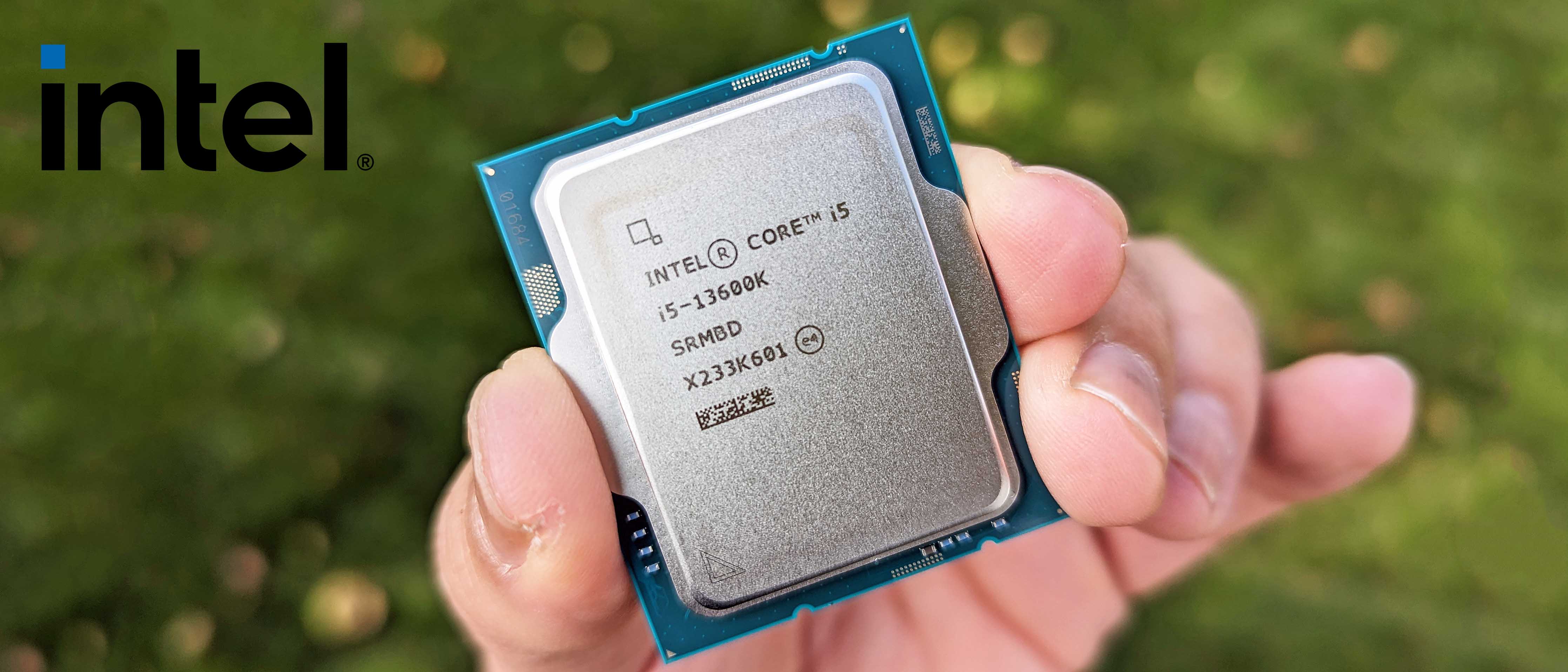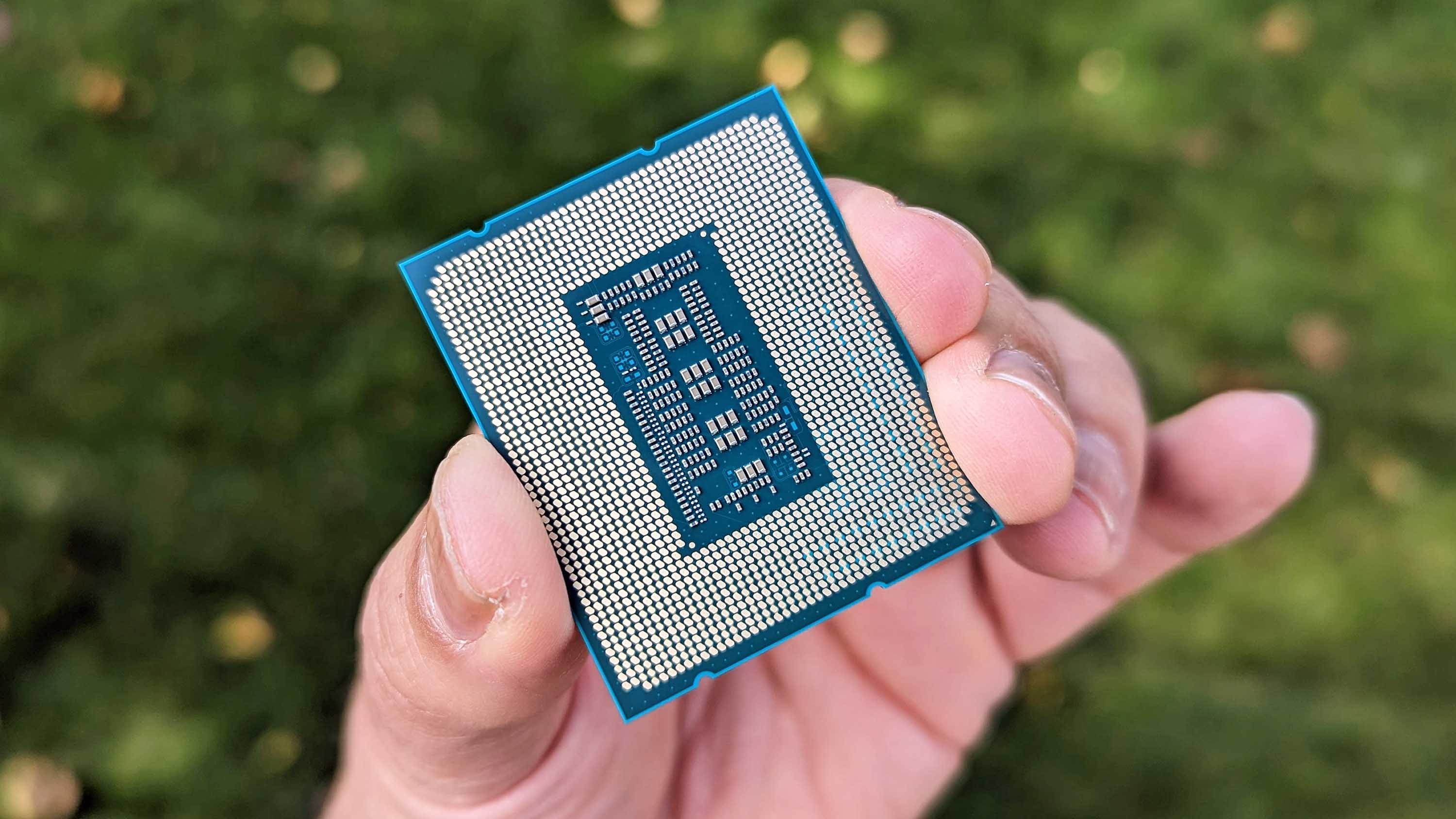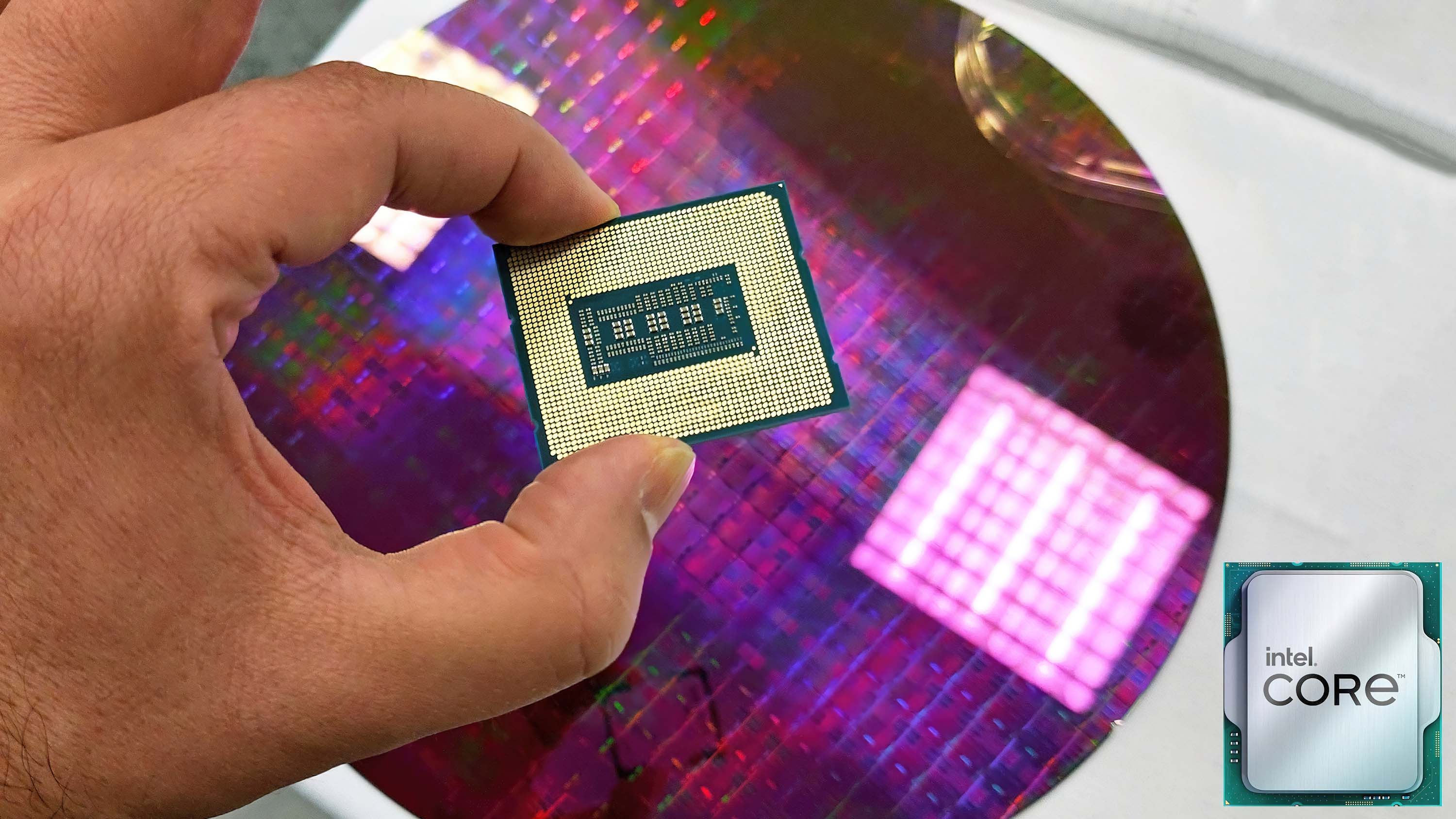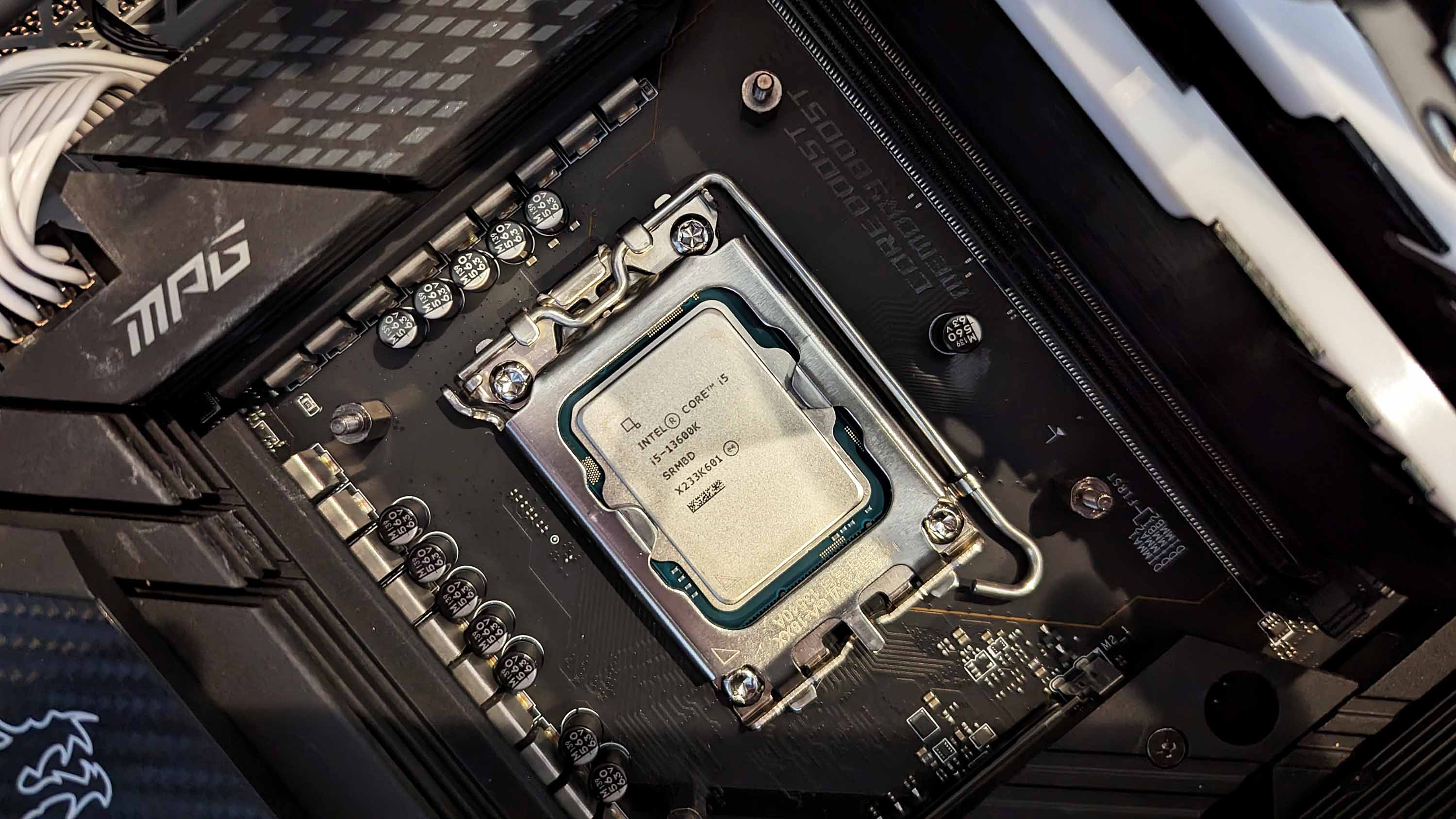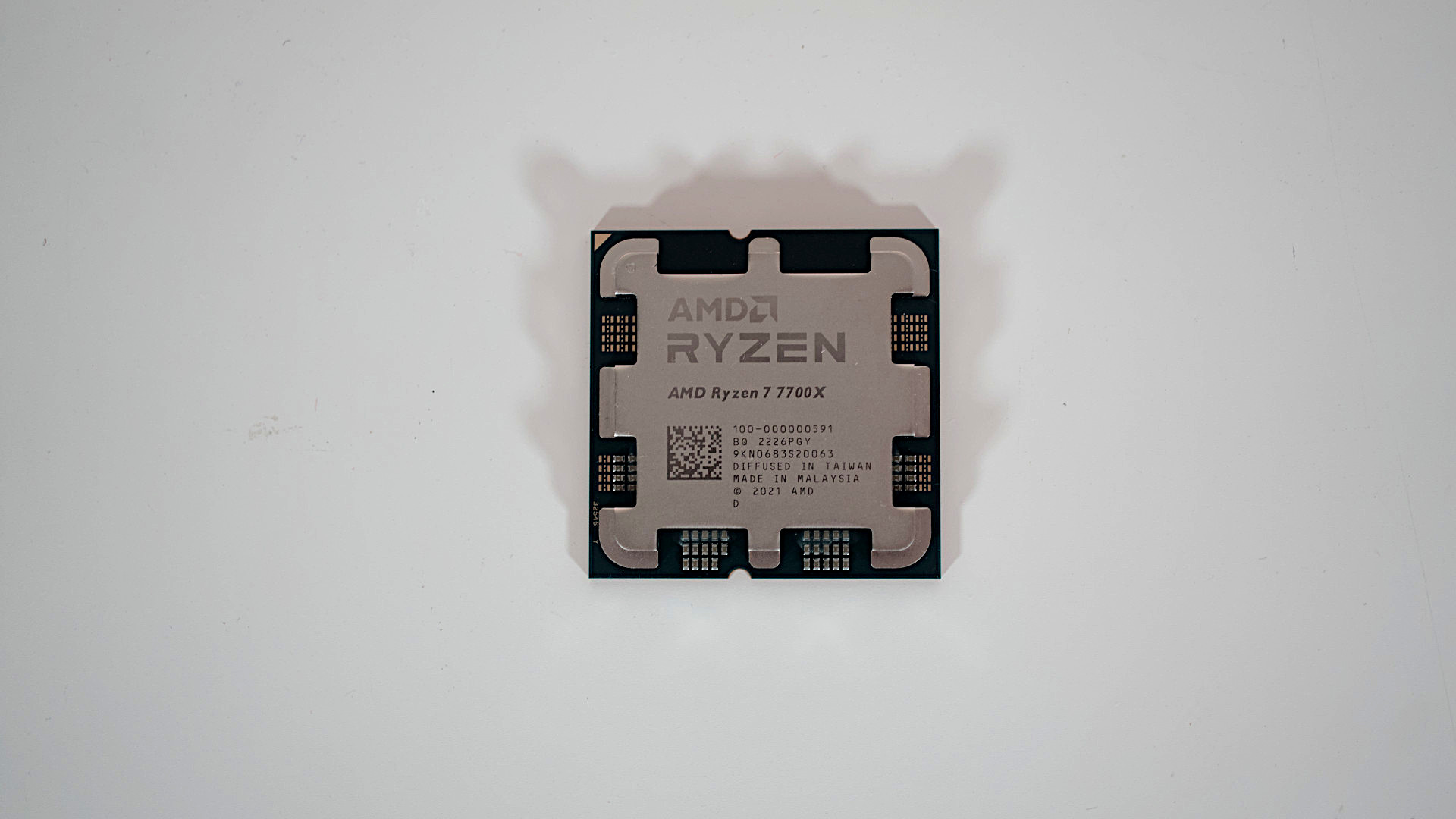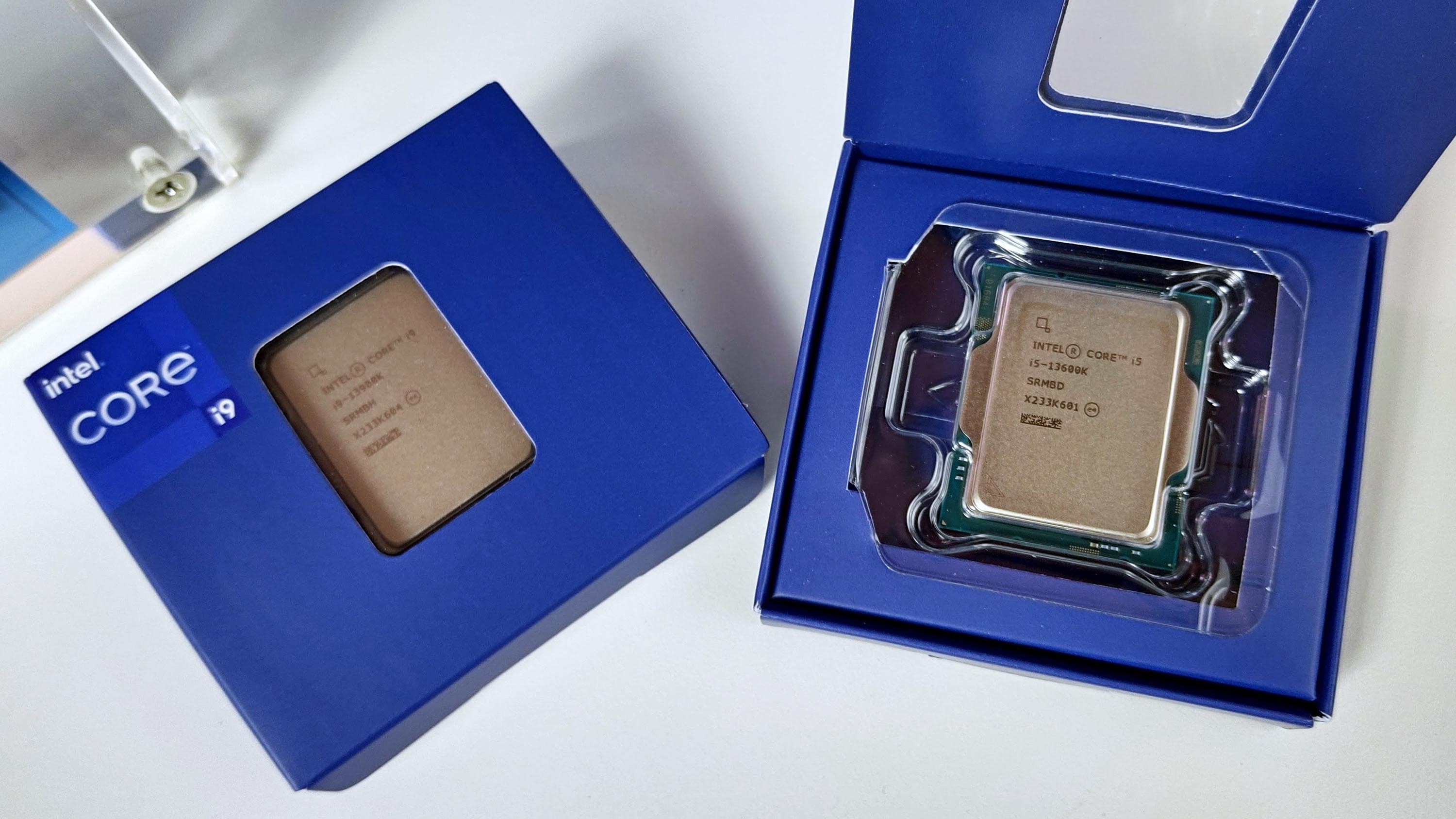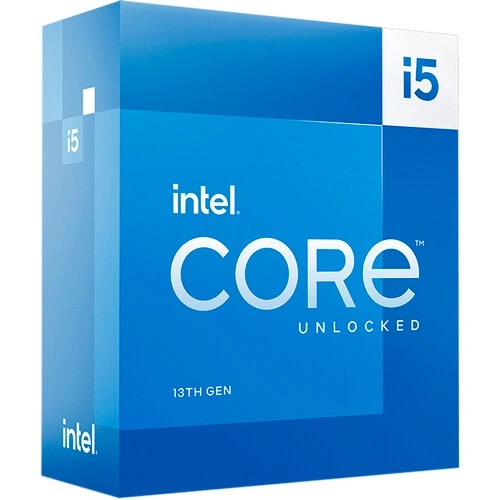Windows Central Verdict
Intel has added even more cores to the new Core i5-13600K and bumped the clock speed to 5.1GHz (up from 4.9GHz in its predecessor). Coming in at $80 cheaper than AMD's main competitor, it's the better value and a much more performant choice if you're upgrading or looking for a new desktop PC.
Pros
- +
Lower price than the Ryzen 7 7700X
- +
Doesn't require DDR5 RAM
- +
Extremely fast at 5.1GHz
- +
The best choice for most people
Cons
- -
Slightly more expensive this year
- -
Larger TDP draw than AMD
Why you can trust Windows Central
In October 2021, Intel pulled the wraps off its 12th Gen ‘Alder Lake’ desktop processors, which have since migrated to nearly every popular laptop in the market, including Microsoft’s latest Surface devices. The 12th Generation was a major architectural shift for Intel with performance cores (‘P-core’), which do the bulk of the work as they are the most powerful, and efficient cores (‘E-core’), which handle background operations. This new design makes these chips ideal for the increasingly complicated multitasking world where people play an online video game while simultaneously streaming (and sometimes even recording).
Now, Intel is back with its 13th Generation of processors ('Raptor Lake'). While the design and socket are the same (and users can use the Z690 motherboards or newer Z790), Intel has amped the chips up by increasing the speeds and adding even more E-cores.
So, how does the mainstream Core i5-13600K stack up to the AMD Ryzen 7 7700X and last year’s Core i5-12600K? Even at 10nm, Intel still delivers substantial yearly updates that don’t disappoint.
Intel Core i5-13600K: Price & Specs
The Intel Core i5-13600K delivers 14-cores (six P-cores, eight E-cores) with a peak speed of 5.1Ghz and a max wattage of 181 watts.
However, since this is a K-series chip, overclocking beyond 5.1GHz with the correct cooling setup is an option and even encouraged.
| CPU | Cores (P-E) | Threads | P/E Core Max Turbo | P/E Core Base | GPU | Unlocked | Price (USD) |
|---|---|---|---|---|---|---|---|
| i5-13600K | 14 (6-8) | 20 | 5.1GHz | 3.5GHz | Intel UHD 770 | ✅ | $319 |
| i5-13600KF | 14 (6-8) | 20 | 5.1GHz | 3.5GHz | n/a | ✅ | $294 |
Pricing for the Core i5-13600K is set at $319, although there is also the i5-13600KF SKU for $294. That KF series omits onboard Intel UHD 770 Graphics. For both Core i5 13th Gen processors, that is a slight increase from the 12th Gen models, which were $264 (i5-12600KF) and $289 (i5-12600K).
Availability for the 13th Gen Core i5 processors begins today, October 20th. That includes the availability of the newer Z790 chipset, although last year’s Z690 motherboards are still compatible with a mandatory CPU microcode BIOS update from your motherboard’s support site.
All the latest news, reviews, and guides for Windows and Xbox diehards.
Intel Core i5-13600K: What's different?
The Core i5-13600K delivers 14-cores compared to last year’s Core i5-12600K with 10-cores. While those extra four cores are all E-cores, the turbo increases to 5.1GHz (vs. 4.9GHz) while the P-core base speed drops to 3.5GHz (vs. 3.7GHz).
The thread count also increases to 20 instead of 16 in the Core i5-12600K.
Not to be left out, L3 and L2 cache is now set at 24MB and 20MB, respectively, on the new i5-13600K, while the 12th Gen version had 20MB of L3 and 9.5MB of L2.
| CPU | Cores | Threads | Turbo Boost Max 3.0 | P / E Core Max Turbo | L3 / L2 Cache | Base / Max TDP |
|---|---|---|---|---|---|---|
| Core i5-13600K | 14 (6P + 8E) | 20 | N/A | Up to 5.1GHz / 3.9GHz | 24MB / 20MB | 125W / 181W |
| Core i5-12600K | 10 (6P + 4E) | 16 | N/A | Up to 4.9Ghz / 3.6GHz | 20MB / 9.5MB | 125W / 150W |
The base wattage is similar in the 12th, and 13th Gen i5-K models at 125W, but the new 13th Generation can peak at 181 watts instead of 150.
Interestingly, the specs between last year’s Core i7-12700K are like this year’s Core i5-13600K, although the core ratio is slightly different, with the i7 getting eight P-cores and four E-cores (vs. 6 and 8, respectively, for the new i5). But the 13th Gen i5 has a higher clock rate with that impressive 5.1Ghz peak turbo compared to the 5.0GHz of the i7.
Intel Core i5-13600K: Performance
We relied on last year’s MSI MPG Z690 Carbon WiFi board for this review. While there are new Z790 boards now available, they do not confer any speed advantages for the 13th Gen series of processors. The Z790 is more forward-looking as it adds one extra USB 3.2 (Gen 2x2) connection, up to 20 PCIe 4.0 lanes (compared to 12 with Intel’s 600-series chipset), fewer PCIe 3.0 lanes (up to 8 compared to 16), and the same 16 lanes of PCIe 5.0.
Cooling was handled with the Corsair H150i Elite Capellix AIO with three 360mm fans placed in the Corsair iCUE 4000X RGB Mid-Tower ATX PC case. For RAM, we relied on the new Corsair Dominator Platinum RGB DDR5, which was clocked to 6600MHz via Intel XMP. The GPU is a NVIDIA GeForce RTX 3080.
As to actual results, we put the Core i5 through a battery of benchmark tests, and in nearly all cases we can reach the same conclusion: The new Core i5-13600K is a beast of a processor that almost always knocks out last year’s Core i7-12700K by a significant margin (e.g., Corona 1.3, CPU-Z, Geekbench 5, and Cinebench 23).
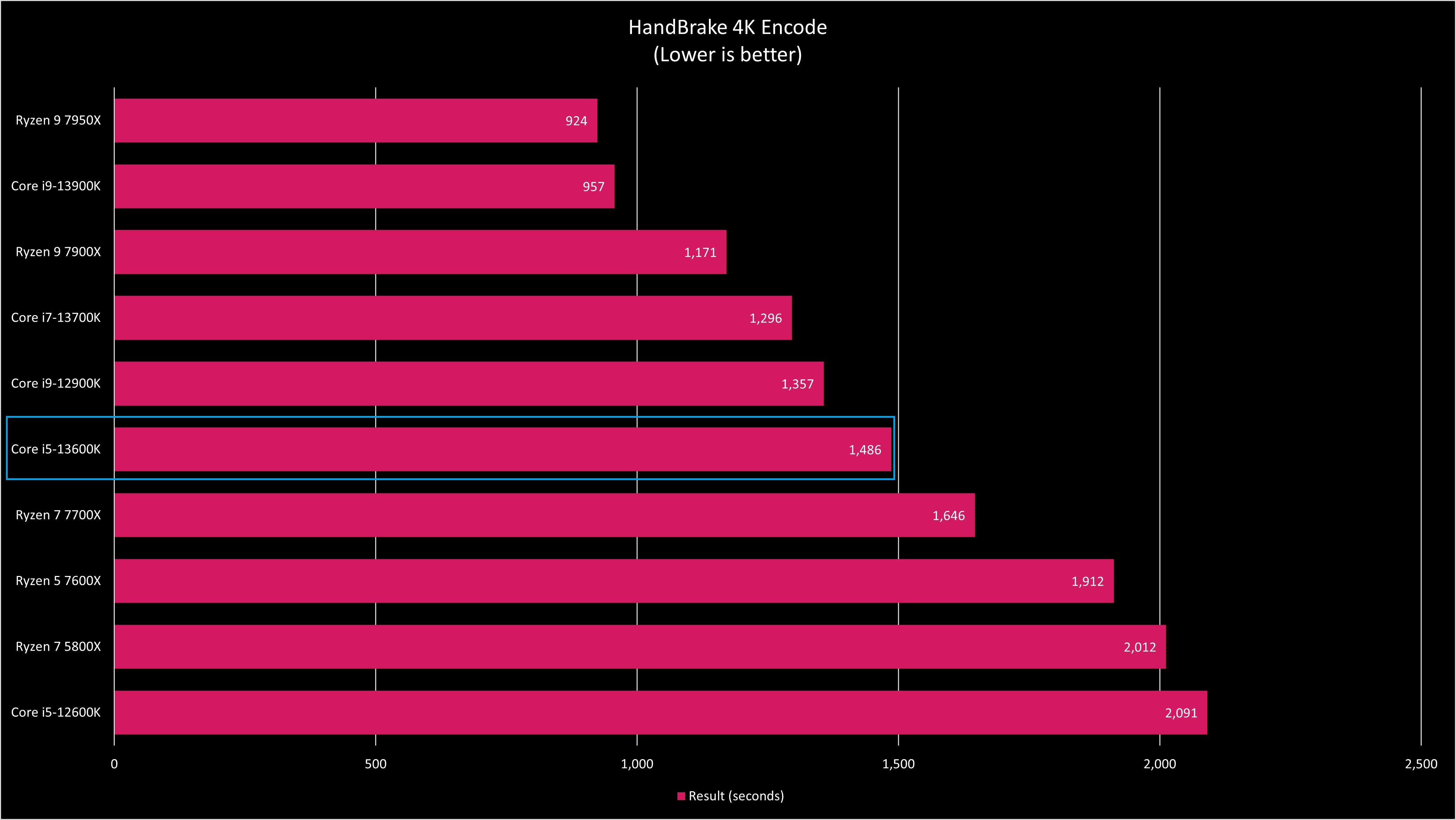
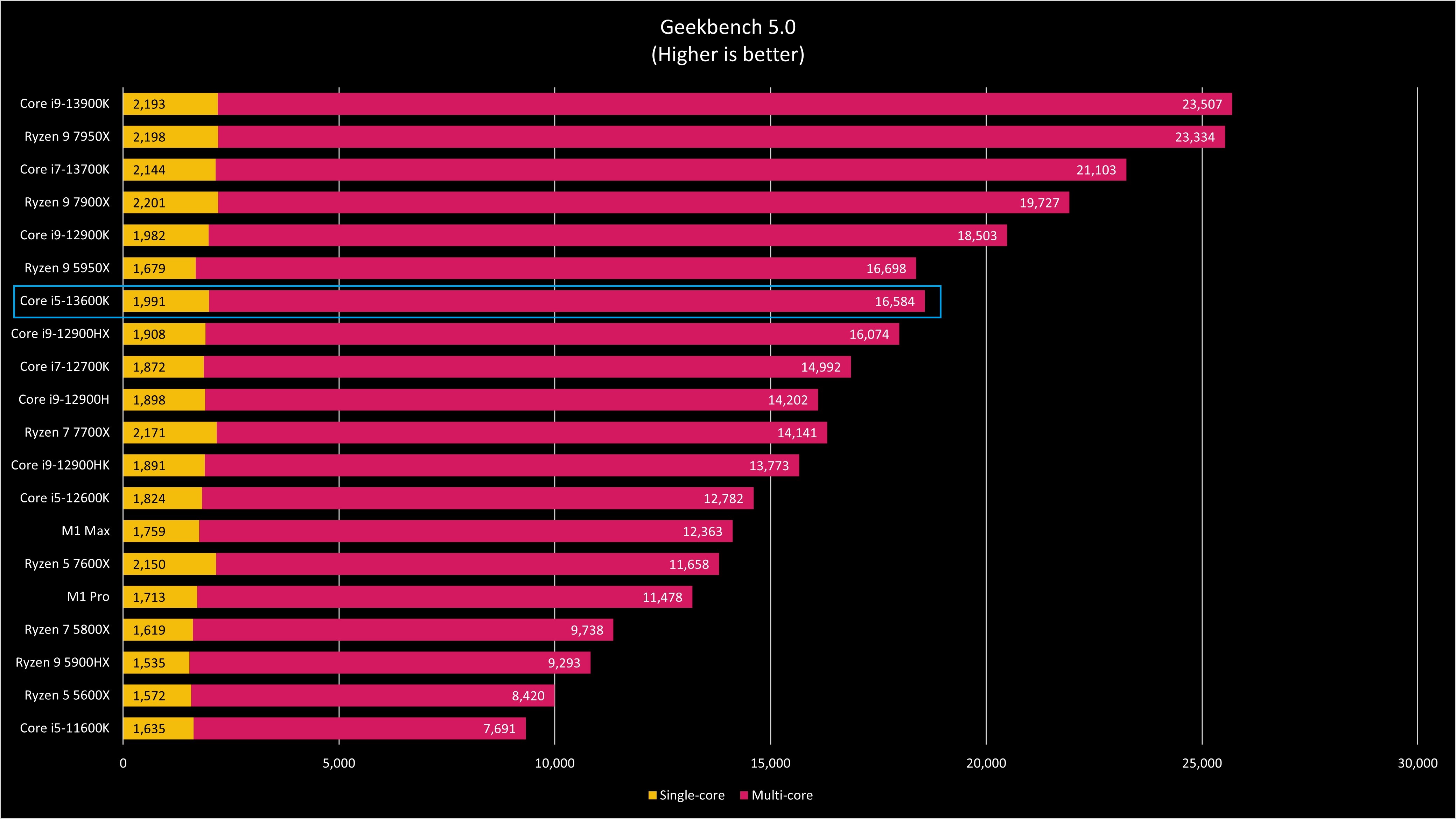
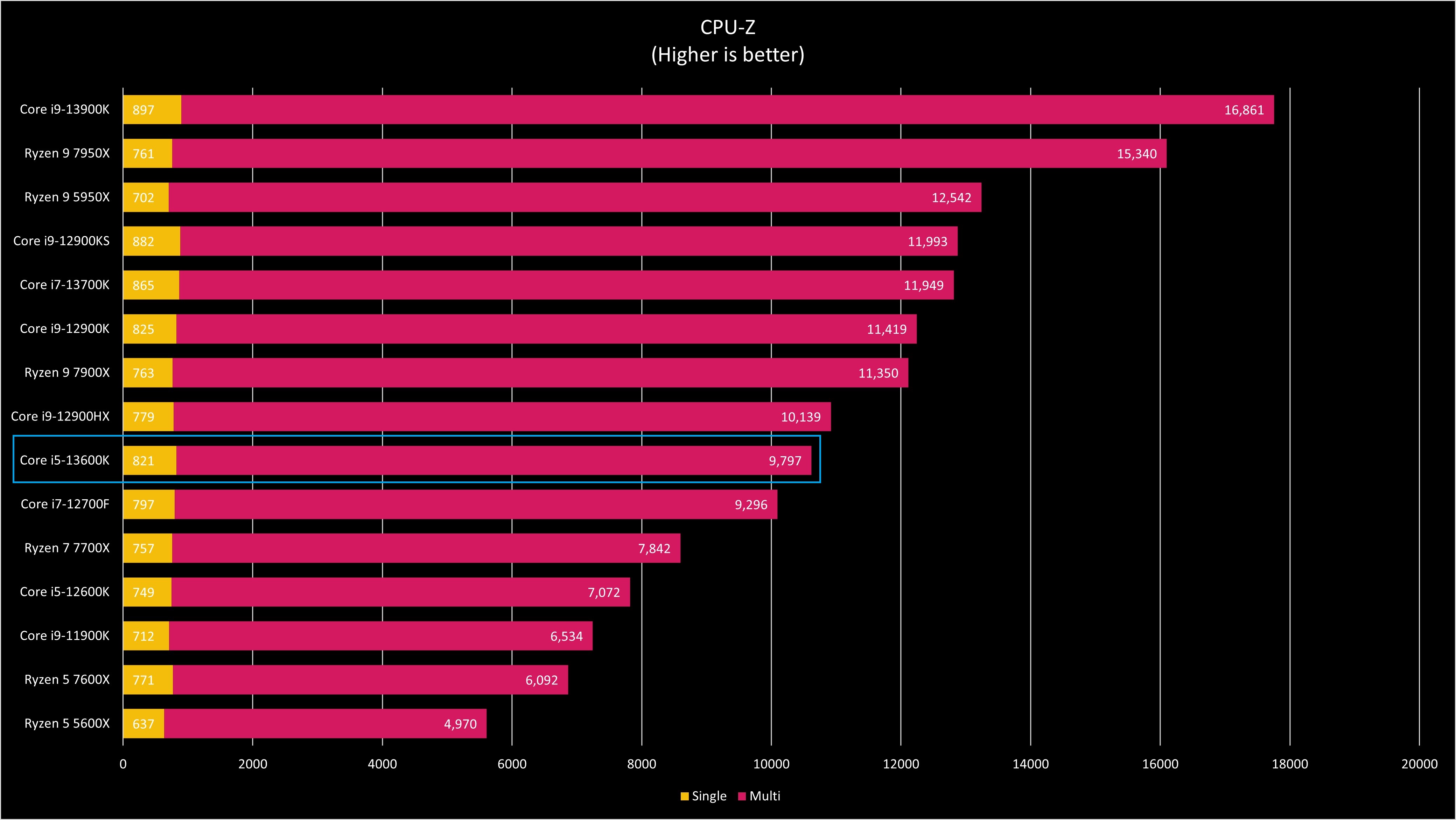
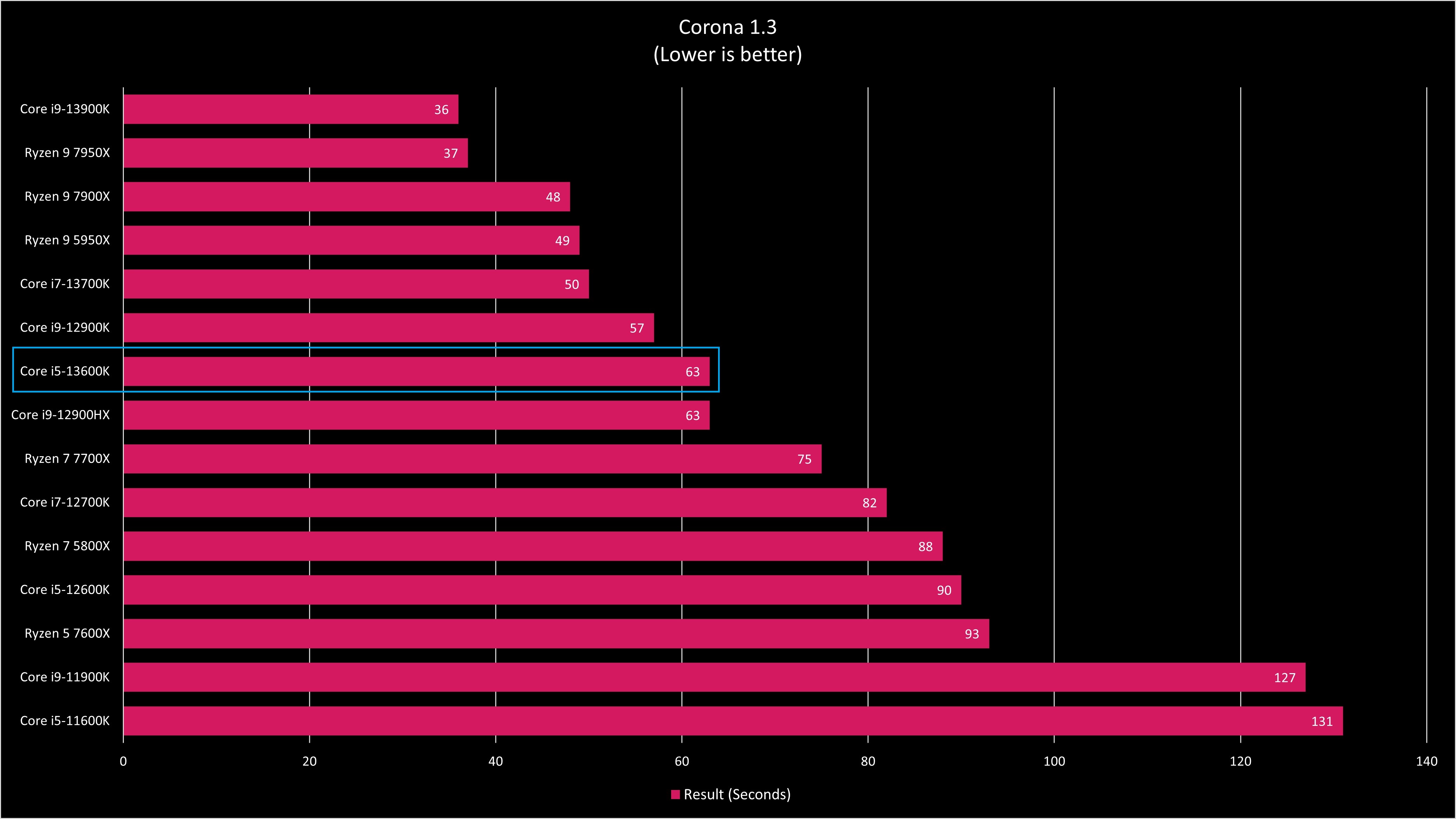
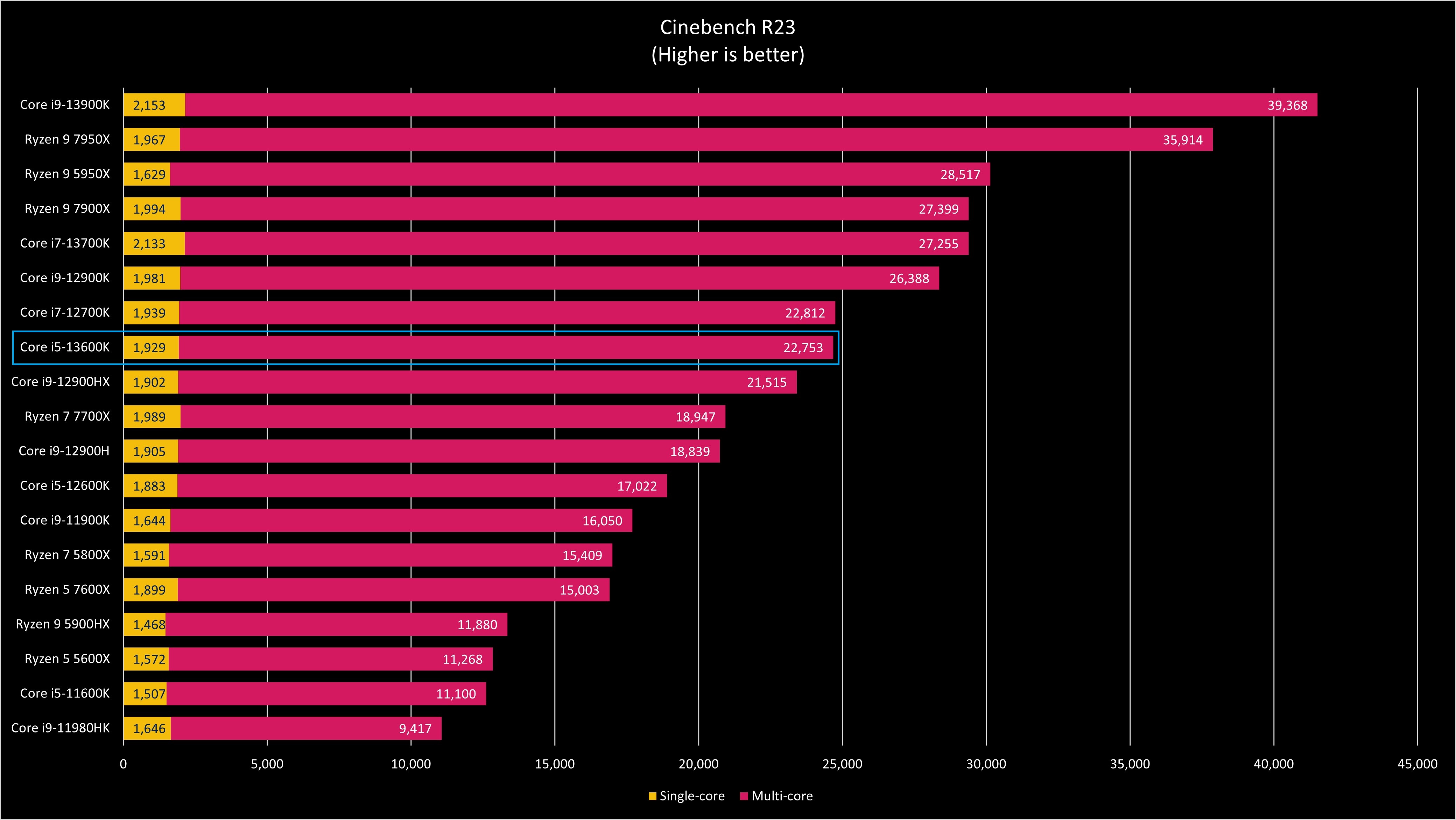

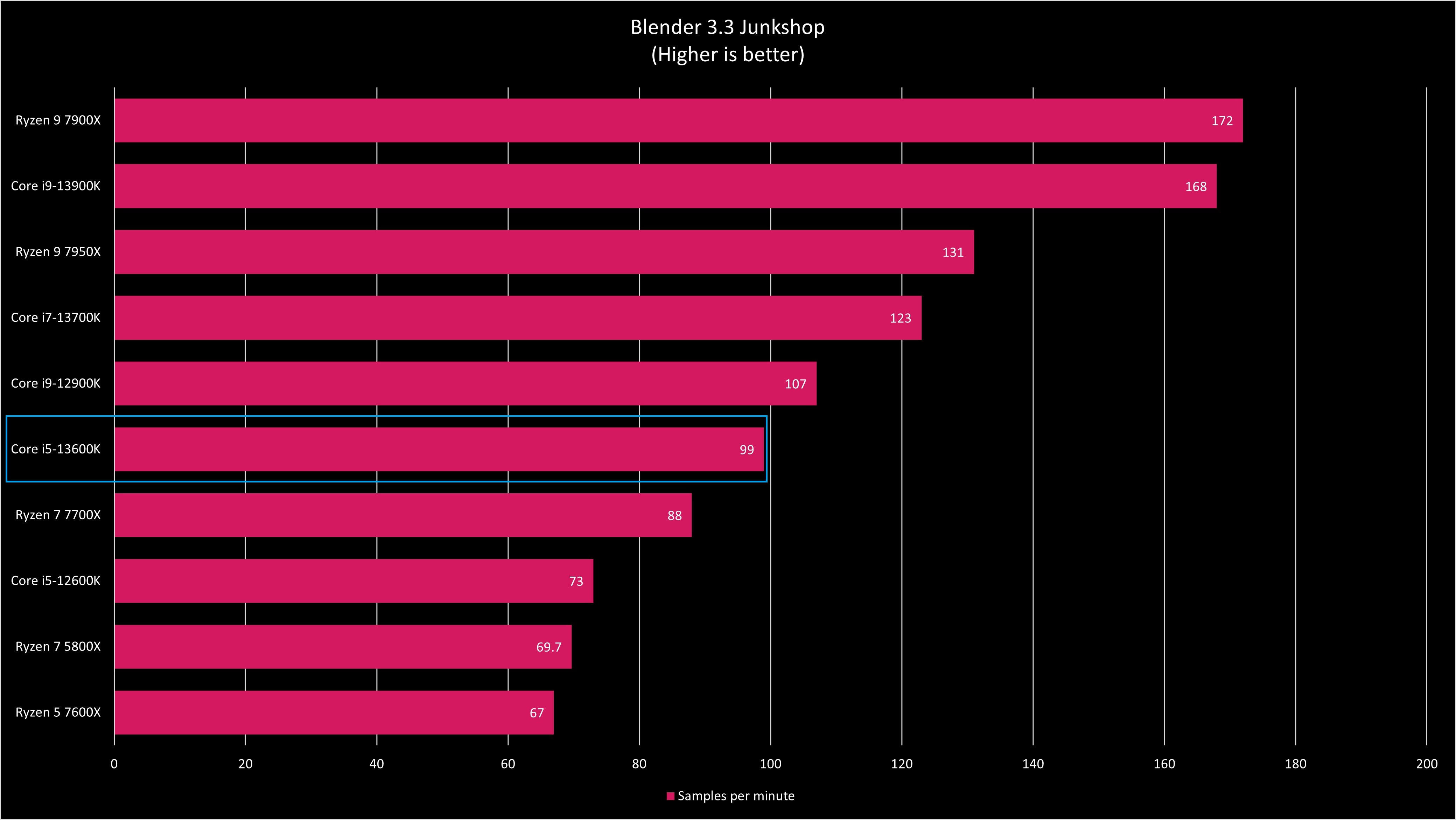
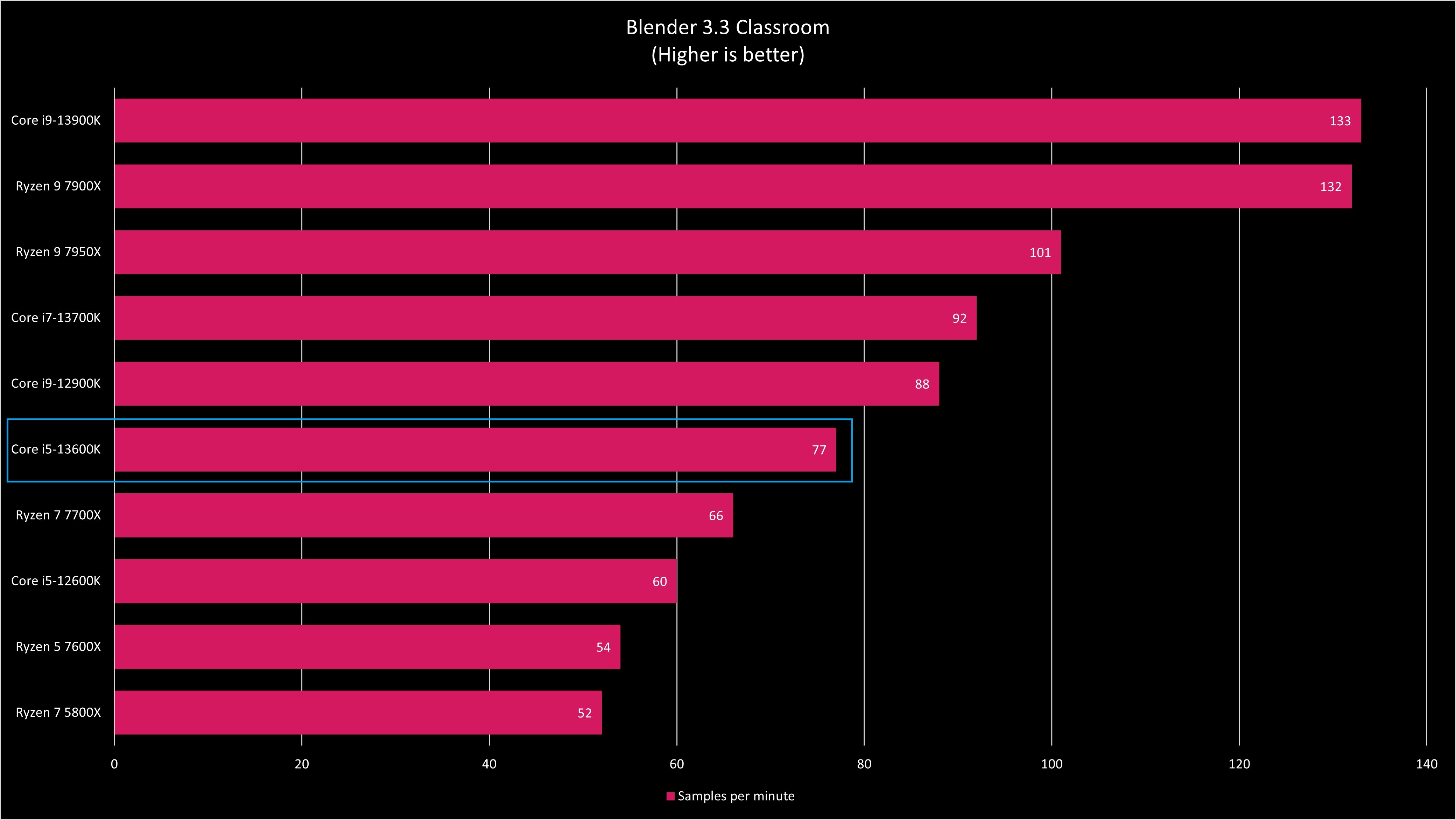
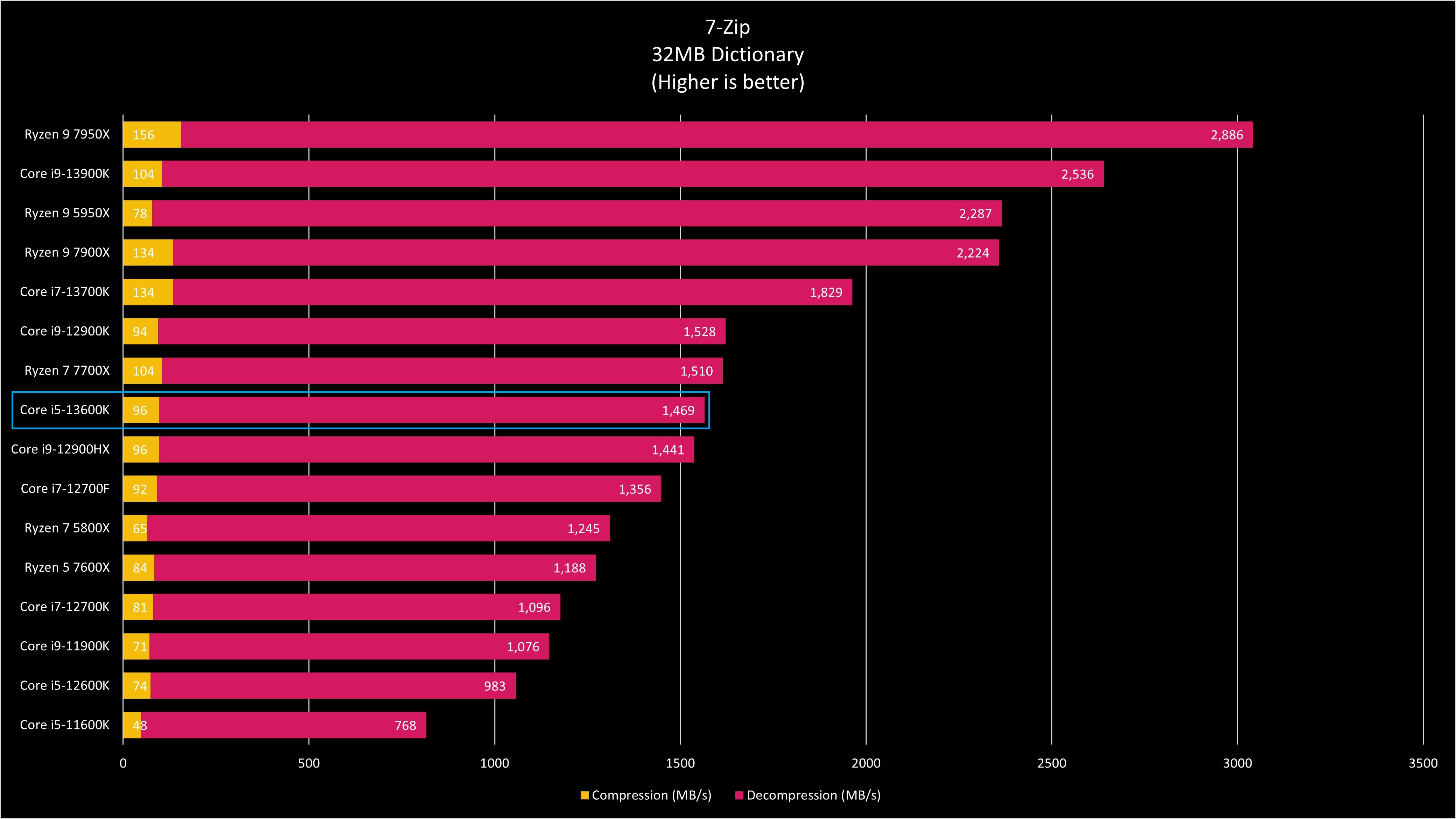
On 3Dmark’s CPU Profile, which includes six tests that feature custom simulations, the i5-13600K scored 10,370. All six tests use the same workload with variations in threading.
Turning to UL’s newest benchmark, Procyon, we benched productivity software consisting of Microsoft Office (Microsoft 365 apps). We reached an overall score of 7,995. Breaking it down, on Word, it hit 8,451, Excel 9,036, PowerPoint 8,135, and a score of 5,745 for Outlook.
Compared to Intel’s ultra-powerful “laptop” processor, the Core i9-12900HX, the i5-13600K can hold its own in Corona but pulls ahead in Cinebench, Geekbench, and 7-Zip, and loses in CPU-Z. The i9-12900HX is a “mobile desktop” processor and is currently the most powerful you can get in any laptop.
The same can be said when we compare the i5-13600K to AMD’s latest Ryzen 7 7700X, where Intel’s chip significantly beats AMD. The one exception in our testing was 7-Zip, where AMD just edged out the i5.
Indeed, compared to its Intel counterparts, the 7-Zip compression benchmark nearly always benefits AMD processors.
But on a HandBrake 4K encode, Geekbench, Cinebench, CPU-Z, Corona, and Blender, all the results favor Intel’s newest Core i5 over AMD despite the Ryzen 7 7700X peaking at 5.4GHz (Intel is “just” 5.1GHz), having more L3 cache, and being on a 5nm manufacturing node. But AMD uses less power at just 105 watts instead of the i5’s peak of 181 watts, so there’s that.
Even compared to the beefy Ryzen 9 5950X, which at the time we called “overkill,” the new i5 goes head-to-head with AMD on Geekbench (single-core favors Intel, multi-core AMD) and loses on CPU-Z, Corona, 7-ZIP, and Cinebench (again, single-core favors Intel, multi-core AMD). Not bad.
Intel Core i5-13600K: Competition
The biggest competition for the Intel Core i5-13600K is the new AMD Ryzen 7 7700X or last year’s Intel 12th Gen i7-12700K or 12700F.
Turning to Intel’s lineup, the Core i5-13600K beats the 12th Gen i7 across the board and uses the same peak wattage of 180 watts. However, you can pick up the i7-12700K for around $309 now compared to the new i5 for $319. Are the $10 savings worth it? It doesn’t seem so, but the i7 pricing will likely only drop further, making that margin a bit wider.
Compared to the AMD Ryzen 7 7700X, the i5-13600K is the clear winner except in TDP. Does that matter on a desktop rig? Only if you’re insanely PSU-constrained or care about a light-bulbs difference in wattage for the environment.
| Header Cell - Column 0 | AMD Ryzen 7 7700X | Intel Core i5-13600K |
|---|---|---|
| Cores/Threads | 8/16 | 14/20 |
| Base Frequency | 4.5GHz | 3.5GHz |
| Boost Frequency | 5.4GHz | 5.1GHz |
| Memory | DDR5 | DDR4/DDR5 |
| L3 Cache | 32MB | 24MB |
| Integrated Graphics | AMD Radeon | Intel UHD Graphics 770 |
| PCIe | PCIe 5.0 | PCIe 5.0 |
| TDP | 105W | 125W (max 181W) |
| Manufacturing Node | 5nm TSMC | Intel 7 (10nm) |
| Socket | AM5 | FCLGA1700 |
| Price | $399 | $319 |
Usually, this is where we chime in about AMD being a better value, but even that argument doesn’t hold water as the new 7700X retails for $380 to $400 compared to the i5-13600K’s $319. Moreover, the 7700X only supports DDR5 RAM, whereas the 13th Gen Intel chips support both (cheaper) DDR4 and DDR5, meaning that you are not forced to upgrade (DDR5 is still about 2x the price of DDR4, although prices have fallen).
Even if you’re in the AMD ecosystem, the new Ryzen 7 7700X requires the new AM5 socket, so you’ll be forced to get a new motherboard. Of course, the same is true if you are coming from anything Intel 11th Generation or earlier, whereas 12th Gen users are OK, so that may be a wash depending on your current setup.
(See our best Z690 motherboards for some ideas, as they will be more affordable than the newer Z790s).
If you want more performance, you could move to the new 13th Gen Core i7-13700K ($409), or the top-tier Core i9-13900K ($589).
Finally, another alternative is the new Ryzen 5 7600X (~$300), an entry-level six-core processor. It still requires expensive DDR5 RAM and runs hot, but it's also a good performer (even if substantially slower than the i5-13600K).
Intel Core i5-13600K: Should you buy?
You should buy this if ...
- You want the best mid-range CPU of 2022
- You don't want to spend more on AMD for less performance
- You want to keep your DDR4 RAM
- You like to game, but rely on a better GPU
You should not buy this if ...
- You absolutely need AMD
- You want the most power-efficient chip
- You prefer a slower processor
Despite Intel “recycling” the 12th Gen’s base, the new 13th Generation Core i5 is a significant improvement in raw clock performance and added E-cores, making multitasking even smoother. In other words, it’s a meaningful upgrade, and Intel deserves credit for squeezing that 10nm lemon to deliver such performance per dollar.
Perhaps the bigger story is that despite Intel’s recent setbacks in node transition, the company is beating AMD now in the desktop space both in performance and cost. Such a conclusion is not only reached for this Core i5-13600K but also the top-tier Core i9-13900K, which is $100 cheaper than AMD’s king Ryzen 9 7950X and is even a hair faster in many cases.
All that makes the Core i5-13600K an easy recommendation for PC enthusiasts and anyone looking for a new custom or pre-built desktop computer. It’s the more affordable option, is flexible for RAM options, and it’s simply more performant whether you’re a gamer, video editor, or need it for office productivity.

Daniel Rubino is the Editor-in-chief of Windows Central. He is also the head reviewer, podcast co-host, and analyst. He has been covering Microsoft since 2007 when this site was called WMExperts (and later Windows Phone Central). His interests include Windows, laptops, next-gen computing, and wearable tech. He has reviewed laptops for over 10 years and is particularly fond of 2-in-1 convertibles, Arm64 processors, new form factors, and thin-and-light PCs. Before all this tech stuff, he worked on a Ph.D. in linguistics, performed polysomnographs in NYC, and was a motion-picture operator for 17 years.
